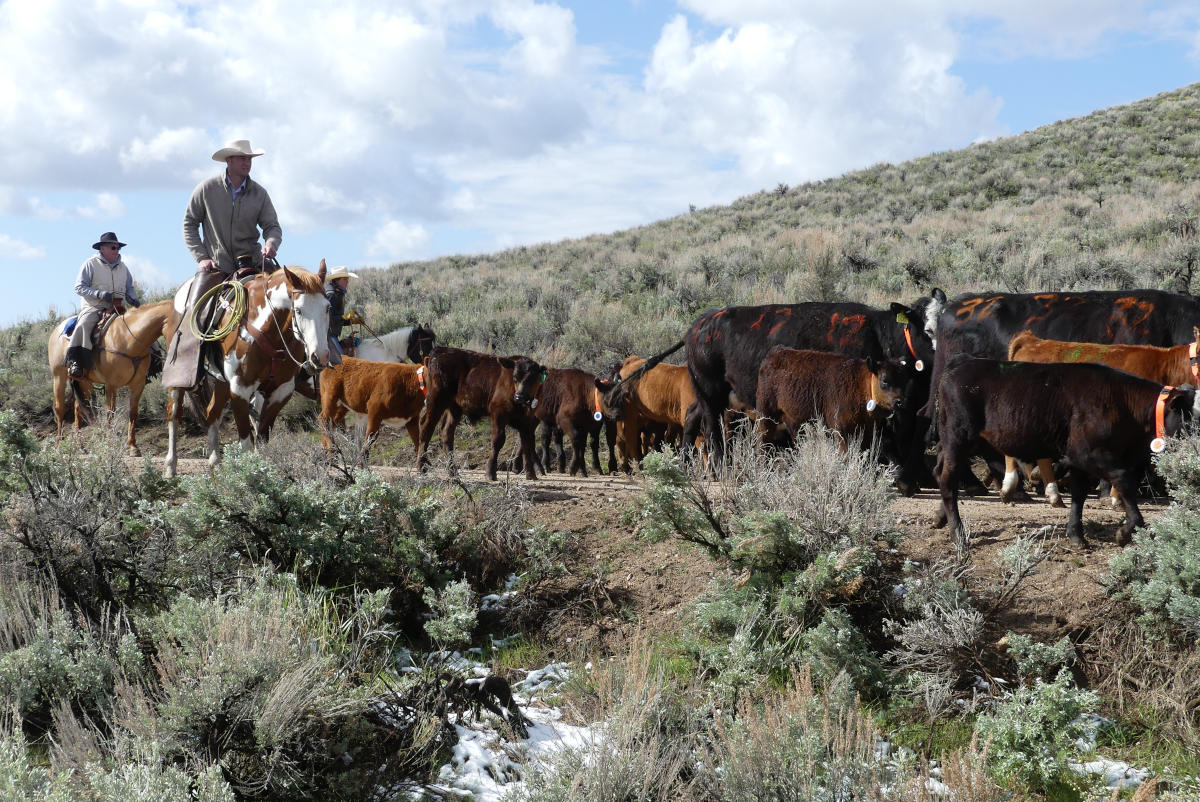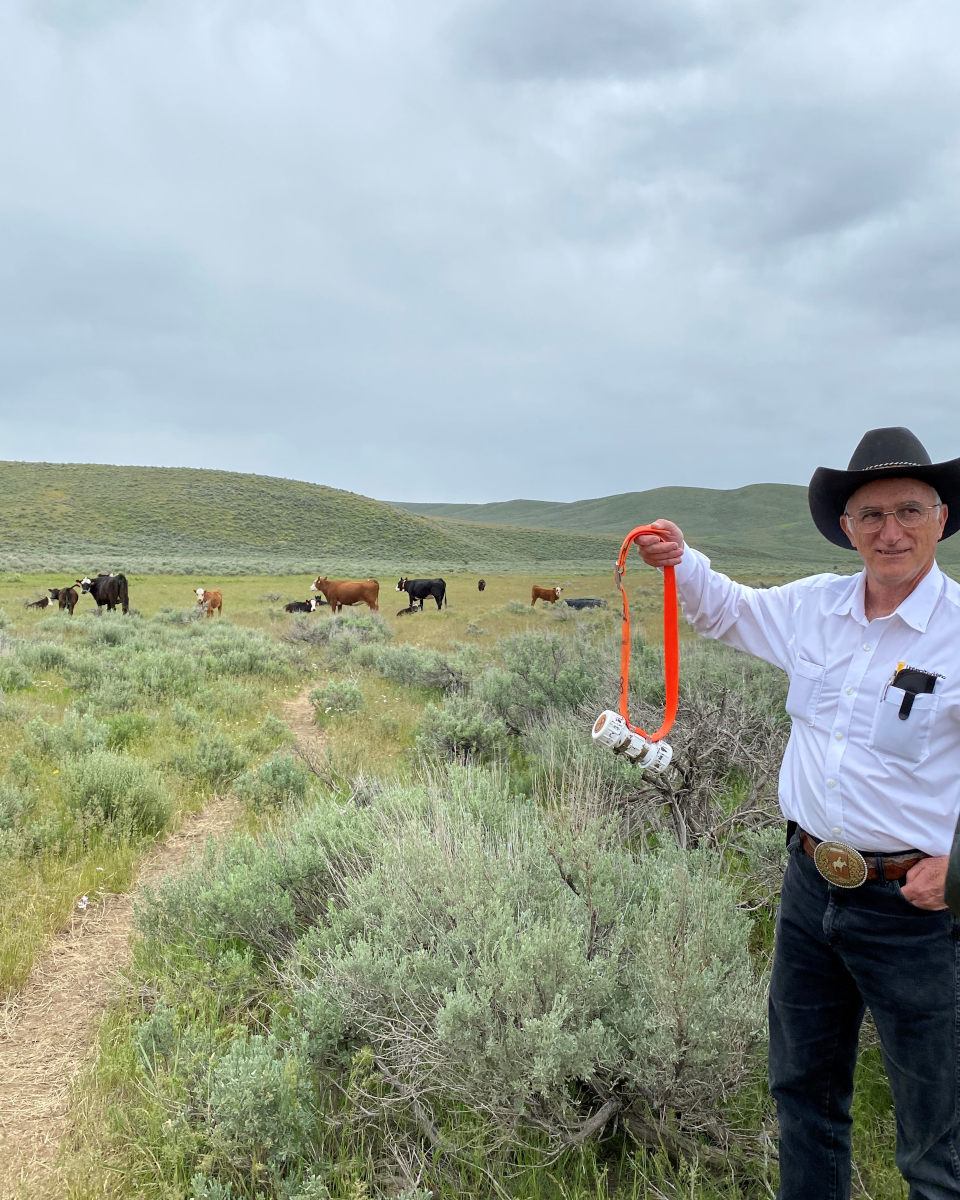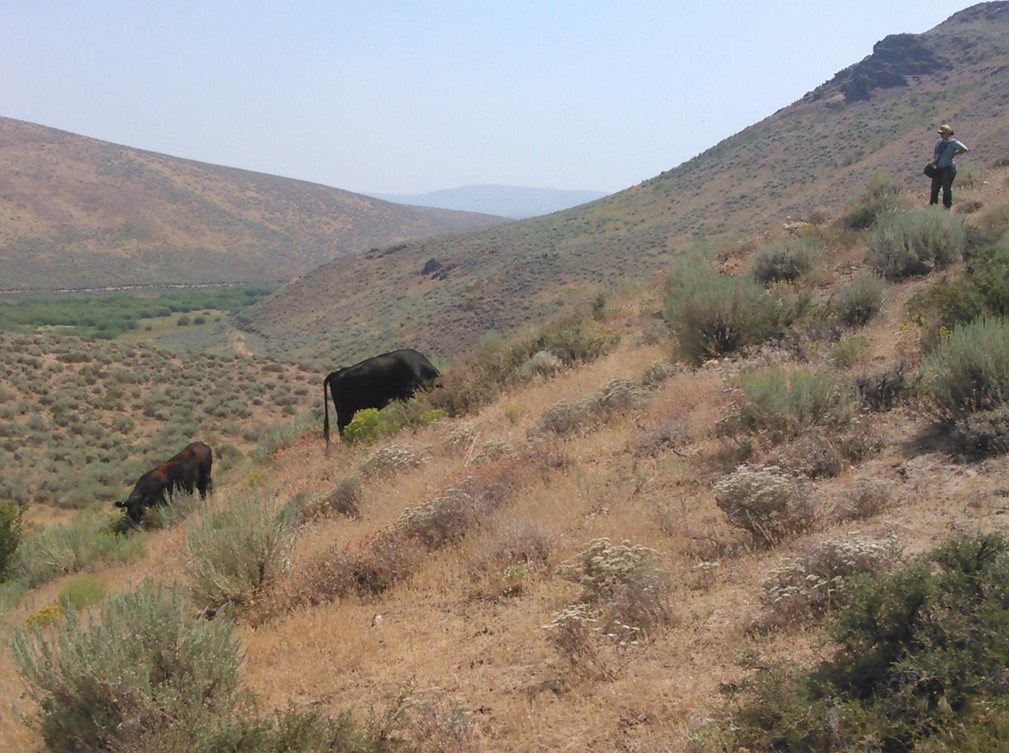Thriving on Range
U of I research sheds light on attributes of cattle that thrive on range.
University of Idaho livestock researchers believe a genetic marker they’ve identified associated with cattle that like to climb hills could provide a new tool for breeding animals that excel in rangeland conditions.
Through their recent research at U of I’s Rinker Rock Creek Ranch in the Wood River Valley and the Nancy M. Cummings Research, Extension and Education Center in Carmen, Jim Sprinkle and his team have correlated hill climbing on range during hot days with good cattle efficiency. In published research, efficient cattle are predisposed to maintain or gain weight with 10% to 15% less feed than their inefficient counterparts.
“We may be able to take a blood test or an ear punch at weaning and identify if heifers have the marker for hill climbing and that would be one thing I’d look at,” said Sprinkle, a UI Extension beef specialist.
Cattle had been classified by efficiency in a feedlot setting for more than two decades when Sprinkle set out in 2016 to evaluate how efficient and inefficient animals would perform on rangeland.
Working with Gulf Coast Data Concepts in Mississippi, Sprinkle designed his own high-tech collars to record cattle activity. His collars are rugged, with the electronics fitted inside PVC. Each collar has a GPS unit to determine location and elevation, as well as an accelerometer – used on rockets to measure velocity in three directions. Accelerometers are also used to enable screen orientation in mobile phones. Paired with recorded head movements of livestock, the accelerometers tell researchers how long individual animals spend walking, hill climbing, grazing, nursing or relaxing.
Sprinkle can produce his collars for $315 each, compared with $2,500 each for similar products that are available commercially. He updated his collar design in 2021.
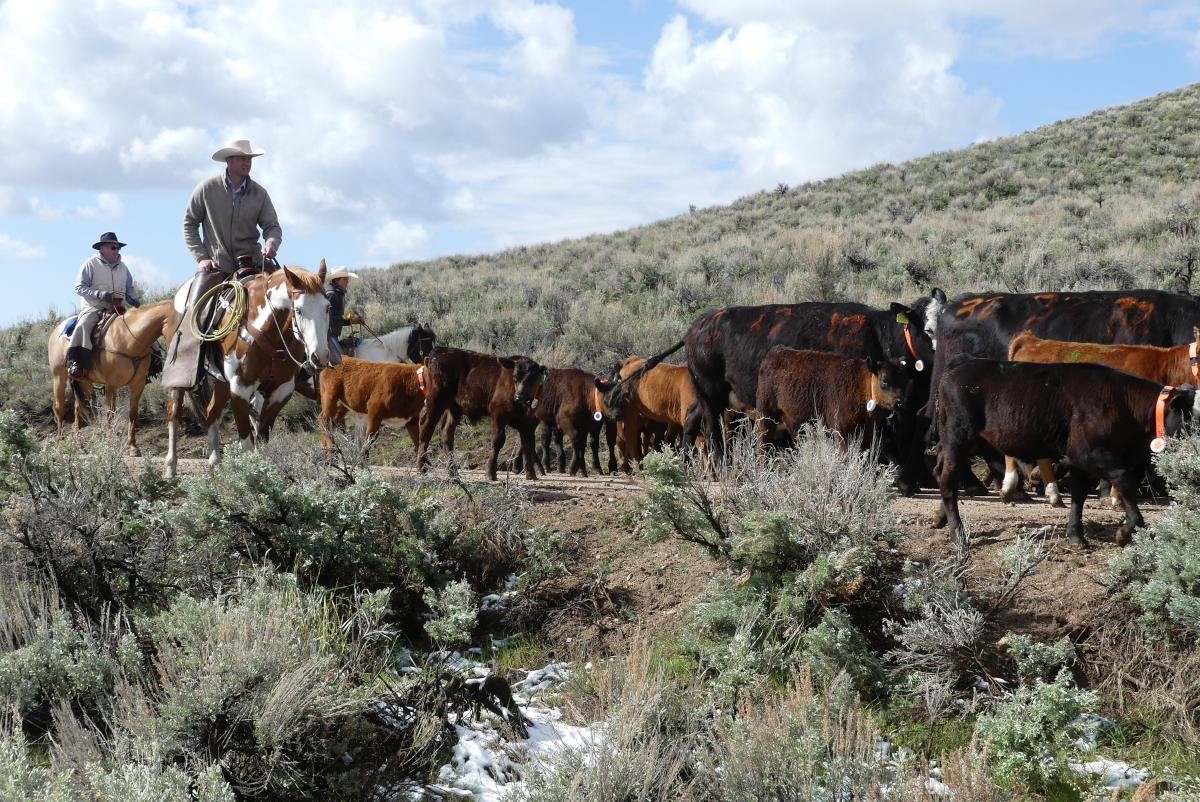
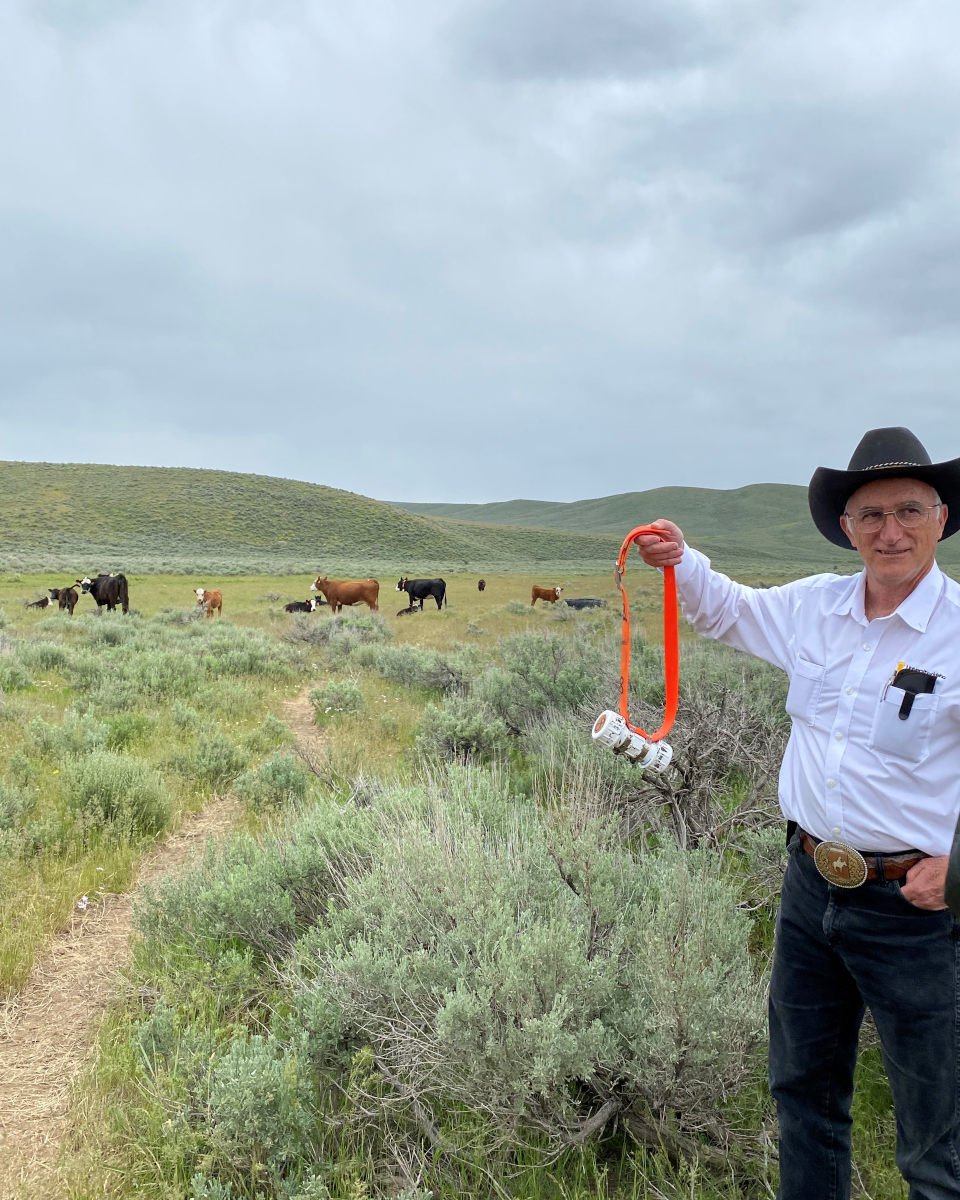
Identifying Efficient Cattle
When he first started the efficiency study, Sprinkle anticipated inefficient cattle would spend more time climbing hills, as they’d need to wander further in pursuit of forage. During the cool days of spring, his theory held true, as the inefficient animals grazed for about 1.7 hours longer per day than efficient animals. When temperatures rose, however, inefficient animals began congregating around streams while efficient animals grazed the hills.
“I originally thought inefficient cows would be the ones we’d want on the rangeland. They’d have more incentive to go out and harvest forage. That’s not what we found,” Sprinkle said.
Sprinkle hypothesizes that inefficient animals have larger, less efficient gastrointestinal tracts, which generate more heat and cause them to stay in the shade and by water for comfort when the temperature is especially hot.
“The efficient animals tend to have a more efficient metabolism and use of nutrients,” Sprinkle said.
Sprinkle and his colleagues have noticed no significant differences in weaning weights and body conditions between efficient and inefficient livestock. In one study, efficient cows without calves started on winter pasture with slightly poorer body conditions than inefficient cows, but they lost less weight over the late fall grazing period, maintaining better body condition on poor-quality forage.
A two-year project starting in summer 2022, led by animal physiology doctoral student Landon Sullivan, will evaluate how enzymes and hormones related to stress affect grazing behaviors in efficient and inefficient cattle. The study should answer questions about how nature compared with nurture affect grazing behaviors of calves.
Sullivan will study the genetic, physiological and environmental factors that influence why some cattle remain in riparian areas while others climb hills, with the aim of identifying genetic traits that may be passed along associated with good grazers.
“As feed intake decreases, many components of production will decrease; thus, cattle that are best able to thermoregulate – deal with the heat of summer – are more likely to sustain, maybe even optimize production,” Sullivan said. “If we can better understand the genetic and physiological factors, we can select cattle via genetic markers that possess the potential for grazing higher elevations and implement husbandry practices to meet the physiological needs to fulfill that genetic potential.”
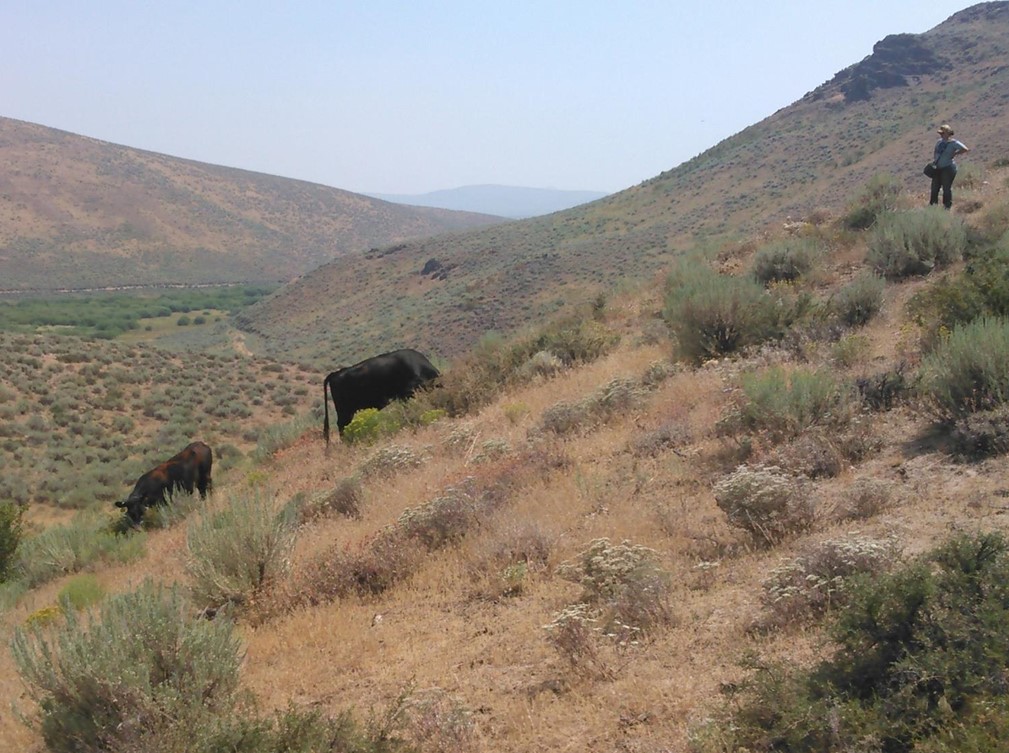
Article by John O’Connell, College of Agricultural and Life Sciences
Published in June 2022







